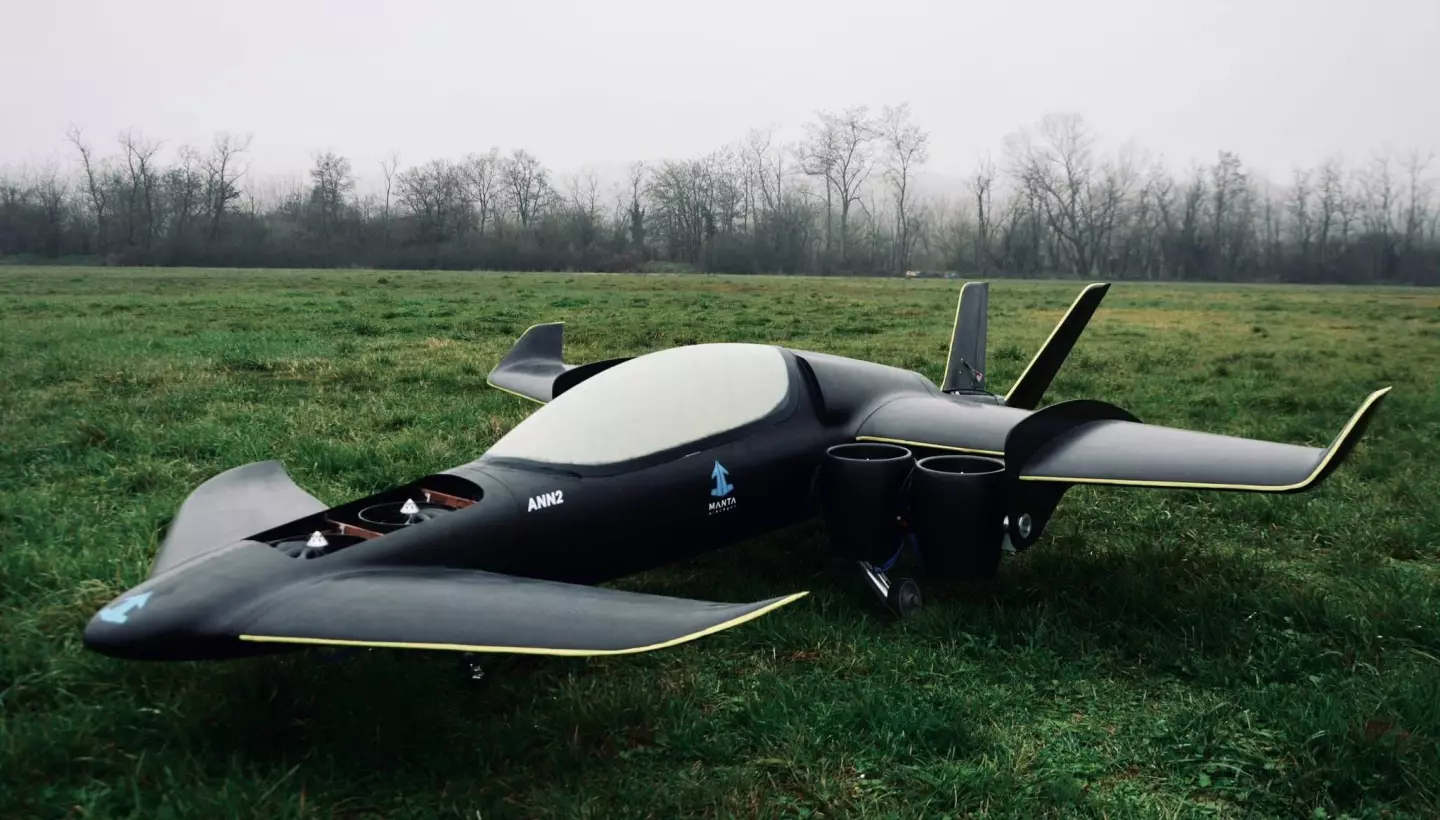Switzerland's Manta Aircraft is working on a flexible hybrid-electric canard aircraft design that will be capable of vertical take-off and landing (VTOL) or efficient short take-off and landing (STOL) operations. A one-third scale model has been built, and the team is preparing for its first flight tests.
The ANN1 and ANN2 aircraft are single- and tandem double-seat versions of the same airframe – a carbon composite-bodied plane shape with a small V tail, a large reverse wing at the rear and a smaller canard wing at the front. Forward propulsion is provided by four ducted electric fans hanging under the front edge of the rear wing, and for VTOL operations these can tilt to face upwards.
Balancing the pitch of the aircraft in a VTOL lift or hover are four more ducted fans in the nose and tail sections, bringing the total to eight props – a decent number for redundancy. On the prototype, these are exposed; if the ANN platform makes it to production, little covers can close over these props to reduce drag in forward flight.

So it can take off and land vertically on a standard sized helipad, but if you've got a little more room it'll also operate as a very short takeoff and landing aircraft as well. Manta says the large wing surfaces give it the ability to manage a conventional takeoff in as little as three times the width of a helipad. Conventional takeoff and landing allows heavier payloads, and also uses a lot less energy if you're going for distance.
The propulsion system is fully electric, but in addition to the battery, Manta plans to include a gas/fuel generator for longer range missions. At a decent cruising speed over 300 km/h (186 mph), the target range is over 600 km (373 miles). A simple fill-up of a fuel tank can get you back airborne quicker than a battery charge.
The ANN1 single-seater is designed as an agile sport plane, while the ANN2 can carry a passenger behind the pilot. A single free seat is unlikely to be much use as an air taxi; Manta conceives it more as a responder craft for rescue, police or paramedic operations.

This, frankly, is going to make things difficult. Transitioning VTOL aircraft will be difficult and brutally expensive to certify, and it's hard to see air taxi operators opting for two-seaters when there are five-and six-seat designs well into development that can carry more people and cargo. So while the ANN looks like a quick, fun, flexible and agile aircraft, the question will be who's going to finance it?
Still, Manta has built that one-third scale carbon composite prototype, almost 3 meters (10 foot) long, and if it manages more than a drone-style hover and gets that prototype transitioning to winged flight, it'll still be a very impressive achievement. We look forward to seeing it airborne and following its development.
Source: Manta Aircraft











